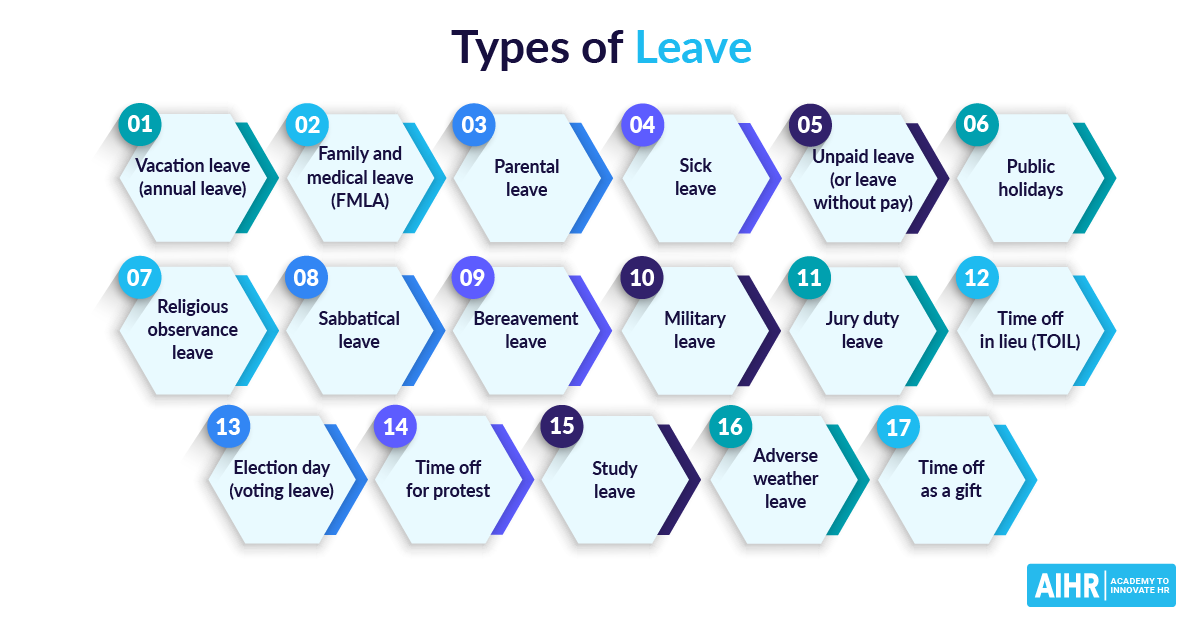Bereavement Leave
What is bereavement leave?
Bereavement leave, also known as compassionate leave, refers to the policy that allows employees to take a few days off following the death of a loved one. Usually, a family member or a close friend must have passed away before the policy can be claimed. Another company considers the severe illness of a loved one to be an actionable cause for a bereavement policy.
Employees take bereavement leave to cope with grief after losing a close relative or friend. Unlike other work leaves, it is not dependent on other work schedules.
Is bereavement leave legally required?
For most organizations worldwide, bereavement leave is generally considered a way to extend compassion and give employees time to deal with grief after a loss.
That said, there is no legal requirement for companies to offer bereavement leave in the US. Even so, states like Oregon, US, have implemented laws that govern how bereavement leave is handled, should a company choose to enact one.
It is the same for the United Kingdom, where there are laws dictating that bereavement leave is compulsory for specific instances, such as the loss of a child.
Is bereavement leave paid out?
Whether bereavement leave is paid out or not depends on the organization. Generally, most companies in the US, Europe, and the UK execute a paid bereavement or compassionate leave policy. Nevertheless, it’s important to note any legal laws applicable to your company within the country the organization operates within.
HR tip
HR needs to evaluate employee contracts, especially employees under Workers’ Unions, to understand the terms of the bereavement policy requirements.
Who is entitled to bereavement leave?
It is generally accepted among companies offering bereavement leaves that every employee working within the company is entitled to it. With that in mind, each company has its protocols to determine the proof of:
- Close relations to the beloved
- Death or loss of the beloved
It is also worth noting that some states, like the above-mentioned Oregon, US, have laws dictating bereavement policies should be equal for every employee in the organization.
How long is bereavement leave?
There are no laws in the US determining the length of bereavement leave. Instead, the size of the bereavement leave is at the organization’s discretion. Certain countries, such as France, Spain, and South Africa have laws providing for the duration of bereavement.
In most cases, companies offer three days or more, allowing employees time to grieve. Considering the closeness of the relationship with the deceased, the company could also provide more bereavement days. In any case, the organization should ensure that the same measures apply to every employee.
More so, it is still the responsibility of HR to ensure efficiency, both in the work performance and the emotional well-being of the employee. As such, HR could decide to include additional time off as part of the sick or annual leave. The specifics can be left to the discretion of the employer and employee via the HR department.
What to include in a bereavement leave policy
Knowing how to react when another person endures the loss of a loved one can be challenging. It is even more difficult in the workplace as you have to consider the employee’s needs while maintaining the organizational output in terms of performance and ethics.

It is critical for HR in any organization to develop a sound bereavement policy, allowing a mutual-beneficial relationship between the company and the employee.
Here are a few considerations:
1. Determine what qualifies for bereavement leave
First and foremost, HR must establish a well-defined and binding agreement outlining the situations that warrant bereavement leave.
Under this, the company is at liberty to conduct detailed research to determine the conditions that cause mental and emotional strain on the employee. It may include the death or severe injury of a loved one, pet, etc.
2. Determine how many days your company will offer
Another important aspect is for HR to set the days assigned with the bereavement leave. Under this clause, the organization has to refer to the company and state laws before determining the maximum number of days issued on bereavement leave ‘per employee’ or ‘per incident’.
HR tip
Offering your HR team training in empathy to be more sensitive and help employees deal with loss, could be a great value addition to your organization.
3. Define what type of bereavement will be included in your policy
HR must define the criteria for allocating bereavement leave among employees to avoid discrimination.
Different bereavement policies could have varied time-off periods. Moreover, other policies would require further proof and could attract a varied pay agreement altogether. To understand which bereavement policy best suits your specified circumstance, it is essential to check out different policies.
4. Identify what support the company will provide employees
To help employees cope with the Three Rs of Grief and Loss, HR should help managers actively engage in the employee’s recovery process. The three Rs entail recognition, remembering, and rebuilding. Some companies offer time off to the employee’s colleagues to offer support during the recognition and remembering process.
For example, a few employees may be allowed time off to attend the funeral when the immediate family member of a workmate is deceased.







